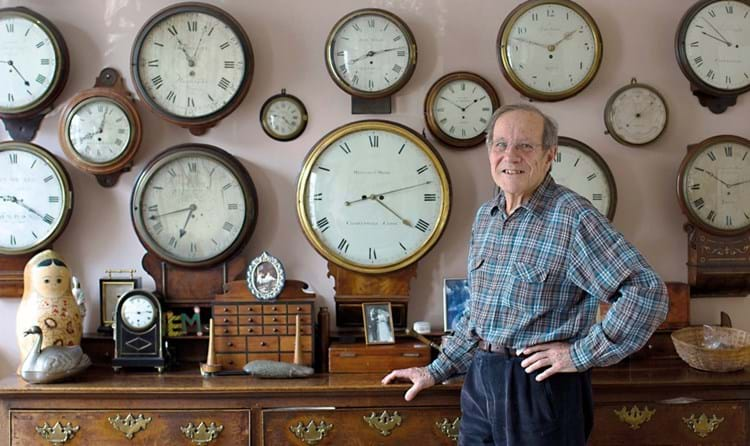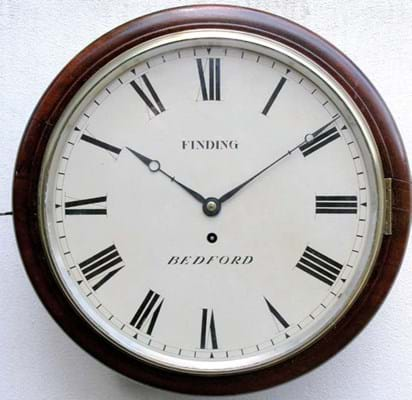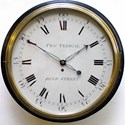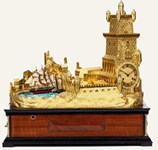
Wall clocks have escaped the doldrums affecting antiques and clocks in general, reckons Burd, because they are mostly what he terms “styleless”.
“They are not out of place in a Georgian or Victorian decor scheme, or in a minimalist interior where their simplicity is in keeping with the rest,” he says. “They can find favour in an Ikea home as well as a more conventional one. They also take up little space, and room can always be found for one in even the smallest house.”
When Burd started buying wall clocks they were what he describes as “the poor relations in the clock world, and thus the only sort that I could afford to buy”.
They range in date from about 1760 until 1960 and later examples, from the second half of the 19th century onwards, are still relatively widely available.
Timeless quality
The main production period was c.1830-1920, when they were made in clock factories, principally in London and Birmingham.
These clocks were sold by retailers all over the country, who normally added their name and address to the dial, although they took little part in their manufacture. They continued in production up to the 1960s but, says Burd, the quality of the cases deteriorated, even though the movements were still of good quality.
The early examples are more expensive as few were made and those by good makers are eagerly sought by collectors.
Asked to give the main factors determining value, he cites age, size and condition.
“The main factor is age,” says Burd. “Few were made during the 18th century and were nearly all ‘one offs’, made by the person whose name appears on the dial.”
The style is important, he adds, particularly the details of the movement – with the earlier verge escapement favoured over the more accurate anchor type that superseded it c.1820.
Edward Burd’s stock of wall clocks dates from about 1785 up to around 1900. Prices for his fully restored English versions range from about £900-8000.
The standard diameter of the dials is 12in (30.5cm). Value increases for scarcer larger dials “which can be most impressive on the wall”. But, Burd adds, “not so much as small ones with maybe 7in or 8in dials, which, while being harder to find, are more sought after as there will always be space for one in any home”.
Wall clocks were never designed for drawing rooms but were found in the outhouses and stables of large establishments and offices, explains Burd, so they were often disregarded and abandoned. “I have in the past found them thrown in skips,” he says.
Finding one with all the original parts therefore adds value. “Also, very few of them strike the hours, and even fewer chime the quarters as this would be undesirable in the 19th century workplace. Striking examples are significantly more expensive than simple timepieces.”
“Room can always be found for one in even the smallest house
Burd sources his clocks mainly from auctions, but also privately and from other dealers “who know the sort of thing I like to buy”.
Does repair and restoration take up much time? “A great deal,” he says, “mostly my own stock, but a small amount – say 20% – is repairs for others.”
The majority of the clocks are in poor or neglected condition, and so there is work for both cabinet-makers and clockmakers before they can be marketed. “All of them are at least serviced before being sold, as even when they are in good condition, they need to be overhauled so that I can guarantee them.”
What would be his holy grail in terms of a wall clock?
“I suppose that would have to be a mid-18th century small clock with a wooden or silvered dial, preferably striking, by a really good maker, in untouched condition,” says Burd. “Still looking!”


















